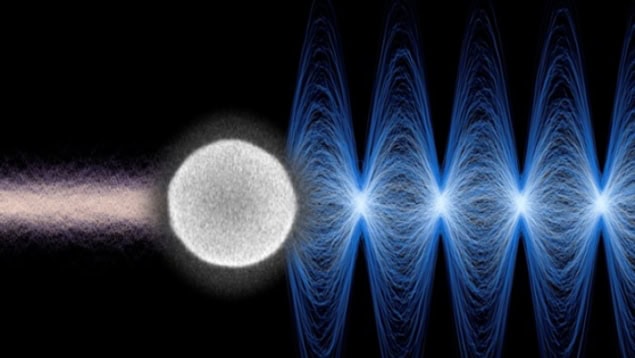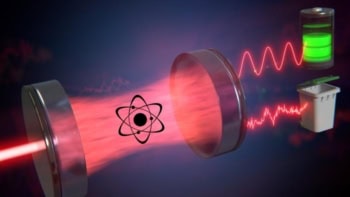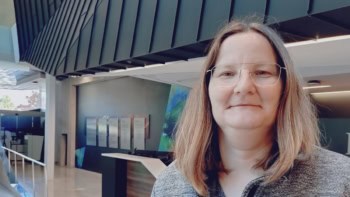
Can quantum mechanics fully describe macroscopic reality? Everyday objects are typically well-described by classical mechanics, whereas atomic-scale objects are governed by quantum mechanics. Exploring the boundary between the two domains could enable fundamental tests of quantum mechanics and the development of new sensing technologies for gravitational measurements.
Now, a team of researchers at Switzerland’s ETH Zürich and Spain’s Institute of Photonic Sciences in Barcelona has taken an important step towards bridging the two regimes by extending the quantum wave nature of nanoparticles — objects a thousand times larger than atoms.
Quantum mechanics posits that even large objects behave as waves. However, the spatial extent of this wave-like behaviour, known as the “coherence length”, is far smaller than the size of large objects. This renders quantum phenomena effectively unobservable for such systems. “To push quantum physics into the macroscopic domain, we need to increase both [mass and coherence length] simultaneously”, explains lead researcher Massimiliano Rossi. This pursuit motivated the team’s recent study, which is described in Physical Review Letters.
Playing with light
The researchers studied large objects called silica nanoparticles, which are 100 nm in diameter. The nanoparticles were held and levitated in vacuum using a tightly-focused laser beam.
Nanoparticles naturally scatter the laser light, and the phase of the scattered photons encodes information about the nanoparticle’s centre-of-mass position. The researchers used this information in a feedback loop, applying electric fields to cool the nanoparticles close to their quantum ground state. The colder sample is in a more “pure” quantum state, such that the quantum wave-like behaviour extends farther in space and the coherence length is longer than in a hot sample. The team measured an initial coherence length of 21 pm (21 × 10-12 m).
Further extending the coherence length required careful manipulation of the laser light. The researchers started with high-power light, which provided a tight harmonic potential for the nanoparticles – like a marble trapped at the bottom of a steep bowl. An advantage of using a light-induced potential is that the curvature of the bowl is easily tuned over a large range by adjusting the laser power.
The researchers lowered the laser power in two pulses, each of which caused the bowl to become shallower, therefore allowing the marble to roll around and explore more of the bowl. In the experiment, this translated to an expansion of the nanoparticle’s coherence length to 73 pm, more than three-fold that of the initial value.
Preserving quantum information
Rossi notes that the main experimental challenge was limiting decoherence, a process that destroys quantum information. He explains that when a nanoparticle interacts with its surroundings, it becomes correlated with a noisy and unmeasurably complex environment. This interaction causes the nanoparticle’s motion to become increasingly random when measured. As a result, the nanoparticle’s quantum mechanical behaviour is washed out and the particle is well described as a classical ball.
It was therefore critical that the researchers expand the coherence length faster than the rate of any decoherence. To achieve this, they meticulously measured, identified, and suppressed all sources of decoherence, with the dominant source being laser light scattering. Scattering was reduced during the expansion pulses because of the lower laser power.

Physicists turn atomic motion from a nuisance to a resource
The achieved 73 pm remains orders of magnitude smaller than the size of the nanoparticle, which was 100 nm in diameter. However, Rossi remarks that “we do not know of any fundamental reason why achieving nanometre coherence lengths should be impossible.” One next step could be to use more expansion pulses to increase the coherence length further.
With a longer expansion time, the main challenge would be to outpace decoherence. Researchers propose using hybrid traps that employ both light and electric fields to confine the nanoparticles, since an electric trap would reduce the decoherence from light scattering. Rossi is now pursuing this direction in his new research group at the Delft University of Technology in the Netherlands.



